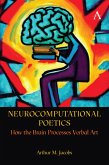"[This book] opens a window into the process of psycholinguistics, pulling together classic and cutting-edge research from a number of different areas to provide an engaging and insightful introduction to the study of language processing. Psycholinguistics 101 is sure to hook students with its enthusiasm as it provides a clear introduction to the modern research in this field."
Maria Polinsky, PhD
Harvard University
Answering these questions and more, Psycholinguistics 101 provides an introduction to how language is stored and processed by mind and brain. The study of psycholinguistics incorporates interdisciplinary research from psychology, linguistics, computer science, neuroscience, and cognitive science. By understanding the processes that underlie language ability, we can help develop more effective ways to teach languages and understand differences in reading abilities.
This book introduces the reader to the basic issues in psycholinguistic research, including its history and the methodologies typically employed in these studies. Key topics discussed include information flow, language representation, and sign language.
Maria Polinsky, PhD
Harvard University
- How is language represented in the brain?
- How do we understand ambiguous language?
- How carefully do we really listen to speakers?
- How is sign language similar to and different from spoken language?
- How does having expertise in multiple languages work?
Answering these questions and more, Psycholinguistics 101 provides an introduction to how language is stored and processed by mind and brain. The study of psycholinguistics incorporates interdisciplinary research from psychology, linguistics, computer science, neuroscience, and cognitive science. By understanding the processes that underlie language ability, we can help develop more effective ways to teach languages and understand differences in reading abilities.
This book introduces the reader to the basic issues in psycholinguistic research, including its history and the methodologies typically employed in these studies. Key topics discussed include information flow, language representation, and sign language.
Dieser Download kann aus rechtlichen Gründen nur mit Rechnungsadresse in A, D ausgeliefert werden.









